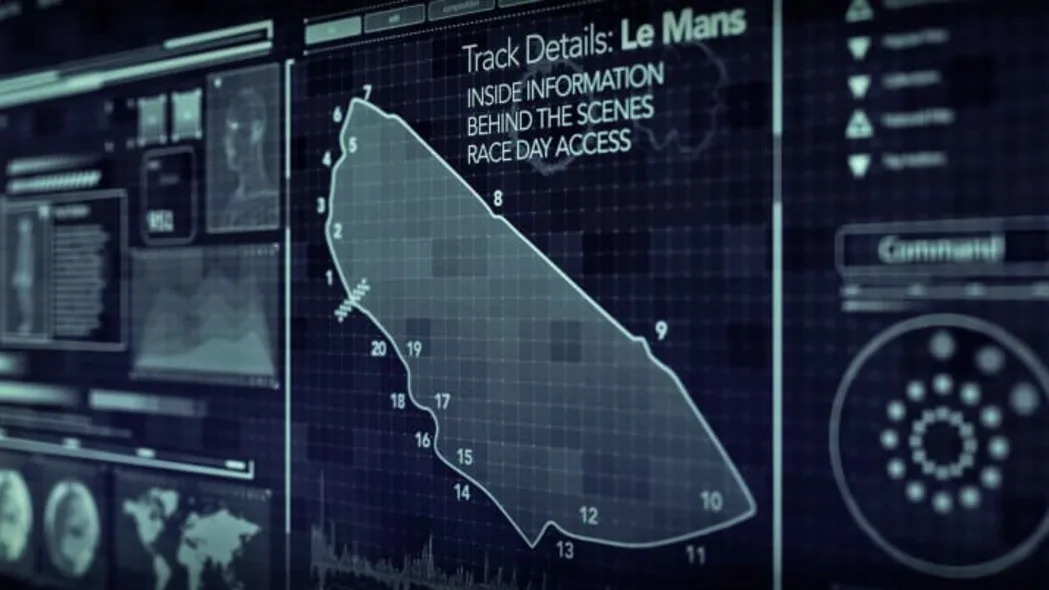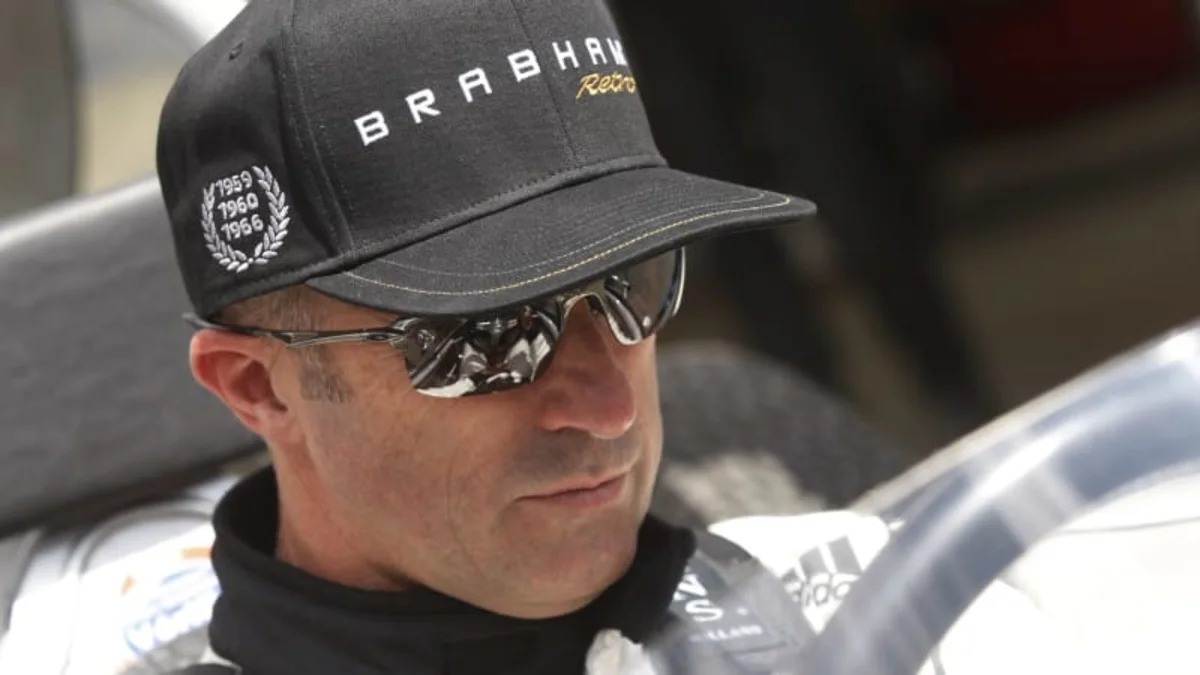The Brabham name is among the most famous in motorsports. Though it's drenched with history, Sir Jack was a champion of innovation. He was the only driver to win a Formula One championship in his own car, and he enjoyed going against conventional wisdom. Now his son, David, a solid driver in his own right, is continuing that spirit with a Le Mans team that's more than a bit unusual.
The new Brabham Racing venture successfully used crowdfunding to generate startup money, and it's making all of its technology open-sourced. If you like what David Brabham's doing, send him cash. If you want to rip off his aerodynamics package, feel free. In the world of motorsports, where deep pockets and closely guarded secrets are the norm, Brabham's tactics are decidedly different. But you might not want to bet against him.
He's finished the initial crowdfunding phase last fall, called Project Brabham, which raised 278,057 British pounds, or about $431,273, in seven-and-a-half weeks. This easily eclipsed the initial goal of 250,000 pounds. It's being used to build a digital portal to give contributors around the world inside access to the team based in the United Kingdom and allow them to have a voice in key decisions. The first stage of the site launched in April.
"We're going to be a proper team," Brabham told Autoblog. "It's not going to be a half-assed team."
Plenty of people seem to agree with him. His crowdfunding effort quickly generated half of its money in the first three days it went live on indiegogo.com, and more than 3,000 contributors sent money.
While infrequent, crowdfunding is not unprecedented in sports, said Marc Edelman, associate professor of law at the Zicklin School of Business at the City University of New York. Everything from European soccer teams partially owned by fans to the publicly owned Green Bay Packers have used versions of the business model. It taps into the desire of fans to be more than passive observers, which is a reason fantasy sports have become so popular and lucrative.
"This is innovative, creative, and it could be successful, but it's absolutely not as unique as some might think," Edelman pointed out.
Though Brabham's venture has met its crowdfunding goal, it's still accepting contributions, which offer different levels of access and interaction with the team. One pound ($1.55) gets you on an email list, while 5,500 pounds ($8,522) gets you pit pass at Le Mans – and the team assigns you engineering duties.

Open Source = Transparent Technology
The open-source element is equally unorthodox. Teams go to great lengths to keep their information secure, even in closely regulated series where all racecars are similar. Conversely, the Brabham operation will be transparent during development, and it argues using an open-source model won't hinder the team competitively.
"We can't keep it all under lock and key. ... It's using the power of collective thinking," he said.
Brabham is not the only one who has tried this approach in endurance racing. Another venture, called Perrinn, started Le Mans plans in 2014, though it fell short of its goal to make the grid this year. It's led by former F1 and Le Mans engineer Nicolas Perrin (yes, he went with a different spelling for his company), who founded the startup in 2011.
David Brabham has been thinking seriously about a new Brabham Racing team for nearly a decade as he considered his post-driving career. It took him seven years, however, and an extended legal fight to get control of the name and trademarks. He commissioned a marketing exercise to see if Brabham still resonated. It did. And he came back with simple thought: "I want to go racing."
The question then becomes: Who's going to drive the racecar? The guy whose name is on the team has back-to-back championships in the American Le Mans Series (2009-2010) and was the overall winner of the Le Mans 24-hour race in 2009, among other accomplishments in his lengthy racing career.
Still, David Brabham, 49, said he's focused on the team, not driving the car. "I'm a bit wary on that [driving]," he said. "I wouldn't want to hold back a program because I want to drive."
In February, he suffered bruises during a crash in a Bentley Continental GT3 at the Bathurst 12 Hours in his native Australia. Regardless of who pilots the race car, if it makes it on the grid, Brabham is trying to make history – or at least write another chapter in his family's already legendary story. Like his father, David Brabham is doing it his way: "I really felt, do I want to go that route, the same as everyone else? And the answer is no."
The new Brabham Racing venture successfully used crowdfunding to generate startup money, and it's making all of its technology open-sourced. If you like what David Brabham's doing, send him cash. If you want to rip off his aerodynamics package, feel free. In the world of motorsports, where deep pockets and closely guarded secrets are the norm, Brabham's tactics are decidedly different. But you might not want to bet against him.
He's finished the initial crowdfunding phase last fall, called Project Brabham, which raised 278,057 British pounds, or about $431,273, in seven-and-a-half weeks. This easily eclipsed the initial goal of 250,000 pounds. It's being used to build a digital portal to give contributors around the world inside access to the team based in the United Kingdom and allow them to have a voice in key decisions. The first stage of the site launched in April.
The seed money also went toward creating a prospectus to articulate the team's plans, and David Brabham is at Le Mans this week to continue drumming up investments and support. It needs 2.5 million pounds ($3.9 million) to source a factory and buy a racecar, and 8 million pounds ($12.4) to get on the grid at the 24 Hours of Le Mans next year. The plan is to compete in the LMP2 class for three years, then move up to LMP1. The all-electric Formula E series is also a possibility, and even F1 is a stretch target.In the world of motorsports, where deep pockets and closely guarded secrets are the norm, Brabham's tactics are decidedly different.
"We're going to be a proper team," Brabham told Autoblog. "It's not going to be a half-assed team."
Plenty of people seem to agree with him. His crowdfunding effort quickly generated half of its money in the first three days it went live on indiegogo.com, and more than 3,000 contributors sent money.
While infrequent, crowdfunding is not unprecedented in sports, said Marc Edelman, associate professor of law at the Zicklin School of Business at the City University of New York. Everything from European soccer teams partially owned by fans to the publicly owned Green Bay Packers have used versions of the business model. It taps into the desire of fans to be more than passive observers, which is a reason fantasy sports have become so popular and lucrative.
"This is innovative, creative, and it could be successful, but it's absolutely not as unique as some might think," Edelman pointed out.
Though Brabham's venture has met its crowdfunding goal, it's still accepting contributions, which offer different levels of access and interaction with the team. One pound ($1.55) gets you on an email list, while 5,500 pounds ($8,522) gets you pit pass at Le Mans – and the team assigns you engineering duties.

Open Source = Transparent Technology
The open-source element is equally unorthodox. Teams go to great lengths to keep their information secure, even in closely regulated series where all racecars are similar. Conversely, the Brabham operation will be transparent during development, and it argues using an open-source model won't hinder the team competitively.
"We can't keep it all under lock and key. ... It's using the power of collective thinking," he said.
Brabham is not the only one who has tried this approach in endurance racing. Another venture, called Perrinn, started Le Mans plans in 2014, though it fell short of its goal to make the grid this year. It's led by former F1 and Le Mans engineer Nicolas Perrin (yes, he went with a different spelling for his company), who founded the startup in 2011.
Perrinn has designed a four-wheel-drive LMP1 car with a hybrid kinetic energy recovery system and is working on an F1 car. Like Brabham, Perrinn makes all of its data available to enthusiasts who sign up for a membership, and they will have a voice in team livery, driver choices, and financial matters. Membership is 40 pounds ($62) per year. "I believe in creating a strong community around our brand," he said."We can't keep it all under lock and key. ... It's using the power of collective thinking."
David Brabham has been thinking seriously about a new Brabham Racing team for nearly a decade as he considered his post-driving career. It took him seven years, however, and an extended legal fight to get control of the name and trademarks. He commissioned a marketing exercise to see if Brabham still resonated. It did. And he came back with simple thought: "I want to go racing."
The question then becomes: Who's going to drive the racecar? The guy whose name is on the team has back-to-back championships in the American Le Mans Series (2009-2010) and was the overall winner of the Le Mans 24-hour race in 2009, among other accomplishments in his lengthy racing career.
Still, David Brabham, 49, said he's focused on the team, not driving the car. "I'm a bit wary on that [driving]," he said. "I wouldn't want to hold back a program because I want to drive."
In February, he suffered bruises during a crash in a Bentley Continental GT3 at the Bathurst 12 Hours in his native Australia. Regardless of who pilots the race car, if it makes it on the grid, Brabham is trying to make history – or at least write another chapter in his family's already legendary story. Like his father, David Brabham is doing it his way: "I really felt, do I want to go that route, the same as everyone else? And the answer is no."


Sign in to post
Please sign in to leave a comment.
Continue